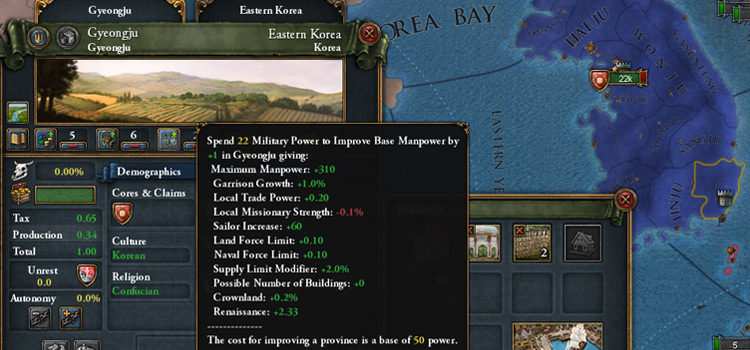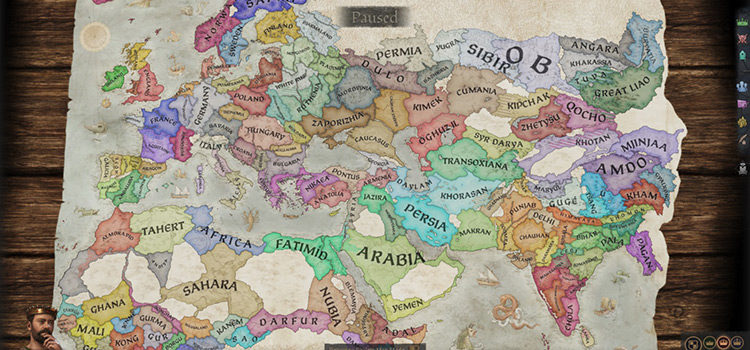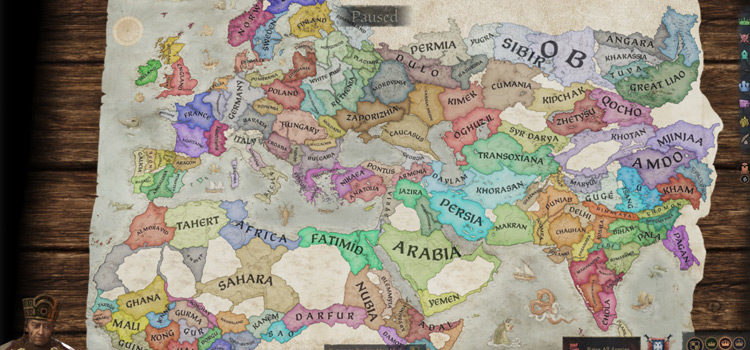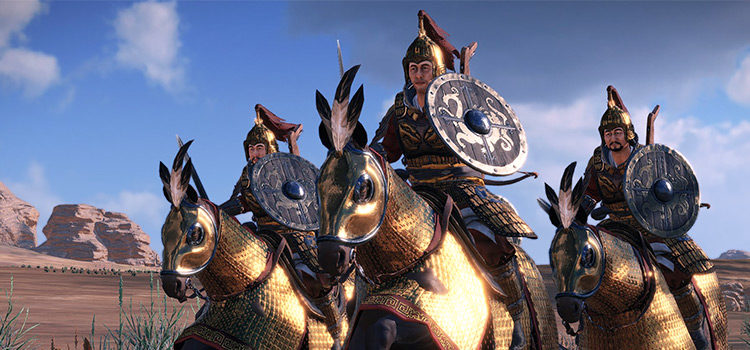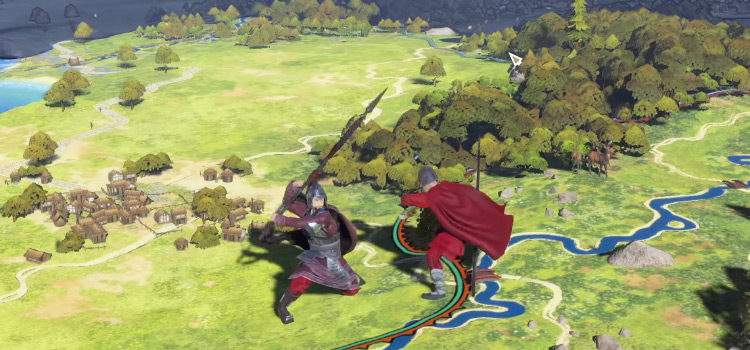7 Best Kingdoms To Play Tall in CK3
This post may contain affiliate links. If you buy something we may get a small commission at no extra cost to you. (Learn more).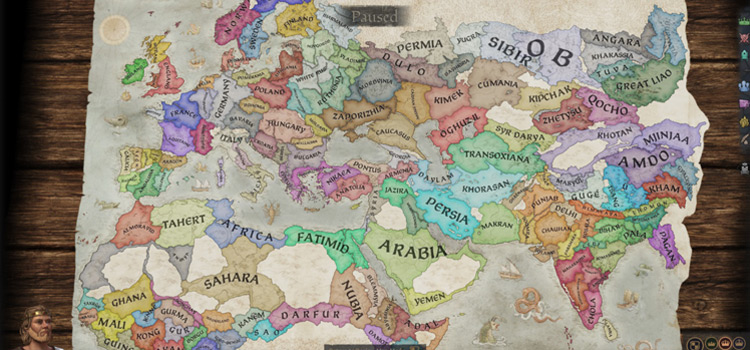
CKIII offers lots of option for gameplay.
You can be a loyal vassal to a king or emperor, or a great conqueror laying claim to vast swathes of land. You could be a crusader from across the sea, or a staunch independent ruler with rich lands in his domain.
That last one is what we’re covering in this list.
In general, “tall” gameplay means that you have a compact and powerful powerbase, instead of a vast realm that relies on quantity over quality.
In the context of CKIII, there can be multiple interpretations of a tall gameplay.
Does ruling a small kingdom with a lot of strong counties count as tall? In my opinion it does.
But even if you disagree with this notion, I’ve made sure that the kingdoms included in this ranking have at least two duchies in them that are suitable for vassal gameplay as a duke.
So before we dive into it, here’s the criteria for kingdoms in this list:
- 5 or less de jure duchies
- Under 25 total counties
- Above average number of holdings per county
- Special buildings and mines
7. Khotan
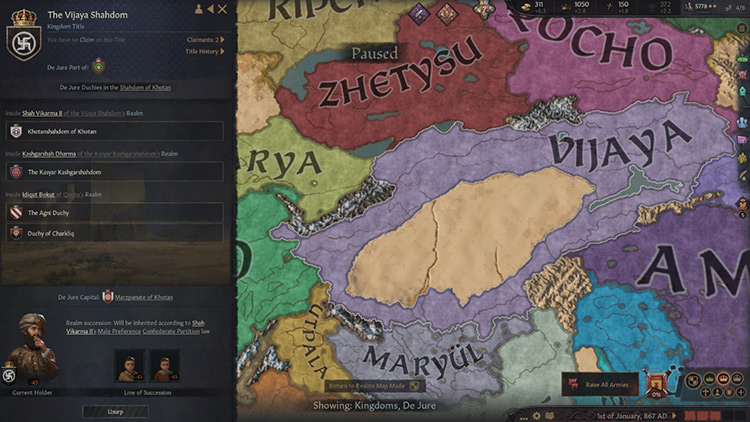
Khotan is a unique case among kingdoms.
Situated entirely along the silk road, it’s an oasis of untapped potential. The few built-up holdings that exist represent the important stops along the silk road that were some of the richest cities during the early Middle Ages.
The kingdom of Khotan has 4 duchies of 4 counties each.
All the duchies have more than average number of holdings per county.
Without much investment in stewardship, you can easily fully hold 2 of the duchies yourself. With some careful planning of your heirs, no rebellion will be enough to bother you!
Khotan offers a highly defensible location with immense potential for development and tall play. On top of that, in the 867 start the native Saka culture of the land is very well suited for tall gameplay in the area. They can even recruit horse archers without being of Mongol or Turkic heritage.
6. Pagan
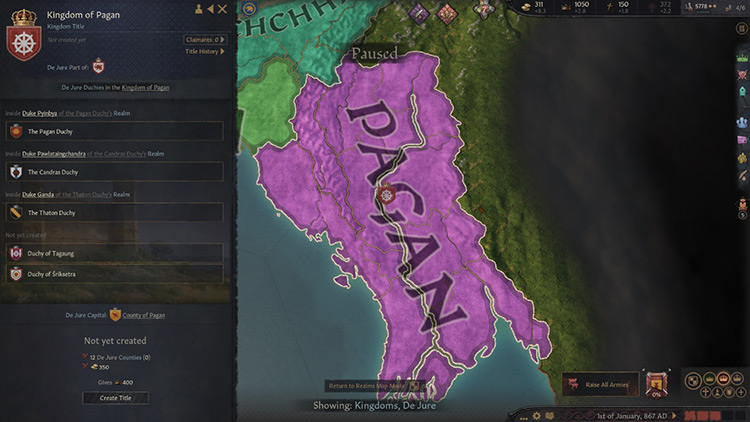
Pagan is the largest kingdom on the list by number of total counties – and the only one with more than 20.
It has 5 de jure duchies. Out of these, the duchies of Pagan and Rāmaññadesa are the ones you want for yourself.
Both duchies feature a unique special building each, while they have the potential to host up to 3 religious buildings between them, depending on the branch of Buddhism you choose.
The Pagan duchy has access to farmlands, the rarest terrain in the map while having 23 holdings among 6 counties. Rāmaññadesa, the homeland of the Mon, is full of coastal holdings with a slightly above average 16 holdings among 5 counties.
You have easy access to two Buddhist sects, one of which (the Ari sect) is the only dharmic faith that can wage full-scale holy wars!
Combine that with the unique Burmese culture, and you can safely spread Buddhism from your rich lands in the corner of the map.
5. Gujarat
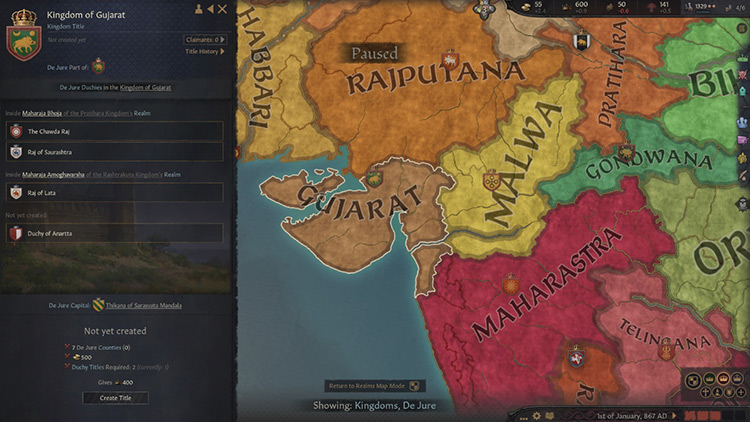
Gujarat is the smallest kingdom on this list with only 13 counties.
However, it has 49 holdings spread among them, which is far above the average.
With good investment in stewardship, you can eventually even control the entire kingdom yourself!
The land of Gujarat is homogenous, and so are its inhabitants. The land is plain with only a couple of exceptions. All but 3 counties feature coastal holdings.
Also, the Gujarati culture synergizes very well with the land. Their “vegetarian” and “seafarers” traditions give them bonuses in “plains” terrain and buff the tradeport line of buildings respectively. On top of that, the “expert artisans” tradition allows you to construct buildings for cheaper.
Gujarat is a kingdom that was made for tall gameplay.
If you also enjoy vassal gameplay, you can help your liege form the empire of Rajputana and then play as a loyal vassal king yourself.
Secure a good feudal contract and you’ll be as good as independent!
4. Tamilakam
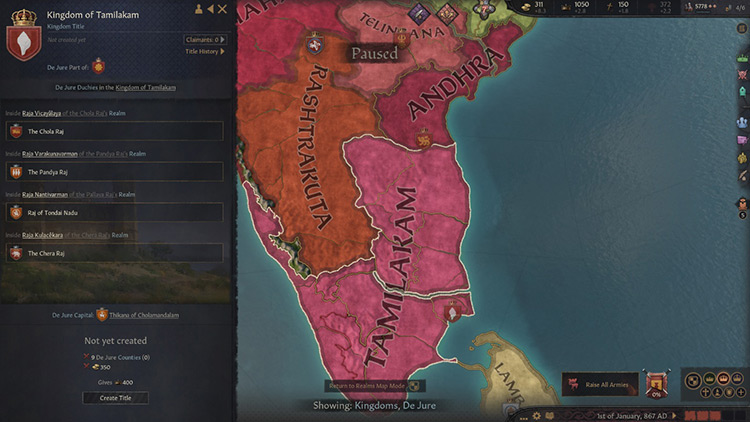
Tamilakam is the final entry from India here, and actually the last on this list across the entirety of Asia.
With 58 holdings amongst 17 counties, the Tamil lands aren’t that much above average in holdings per county.
However, the 2 duchies of interest (those of Chola Nadu and Pandya Nadu) are the ones you’ll be mostly interested in.
These two duchies, home to two legendary dynasties (the Cholas and the Pandyas) are among the most powerful at the game’s start.
They’re the place with the most concentration of development in both starting dates. They also have 25 holdings split between 6 counties between them.
Add to that the unique building in the kingdom’s de jure capital, and the multiple coastal holdings, and you have a tall player’s dream.
With no investment in stewardship, you can hold these two duchies yourself while ruling over the other two. A Hinduism holy site is also located in the northern part of the kingdom.
The Tamil culture’s “parochialism” and “seafarers” traditions are also excellent for tall gameplay with lots of city holdings.
Also, no one will dare conquer your lands.
After all, you’ll be playing as the Tamil kings. No one conquers the Tamil kings. And if you didn’t get that reference, you missed the Internet’s golden age. Ahh to be young.
3. Mali
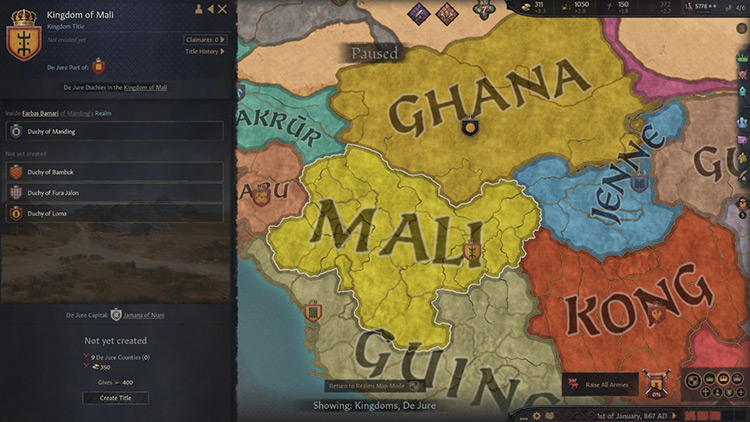
The de jure land of Mali is comprised of 16 counties with 63 holdings among them.
In fact, Mali has only a couple counties with the average amount of holdings, and no counties with a below-average amount! It has almost 4 holdings per county.
Mali also has access to 3 mining settlements, the famous goldmines of Mali. All 3 of them are situated in the duchies of Manding and Bambuk. Manding also has a holy site for the traditional Mandé religions.
You obviously want to be holding these two duchies yourself.
They have the kingdom’s majority of counties, numbering 10 between them.
A decent investment in stewardship with your characters is advised here, both to be able to hold all the land, and to develop it faster.
With no access to the sea, and comprised mostly of hilly terrain, Mali offers a different approach to the typical tall gameplay.
You’ll rely on your goldmines for money, while slowly transitioning your cultural traditions to make the most out of the rough terrain.
Can you recreate the success and amass the riches of Mansa Musa?
Being the richest person on the map can be a reality when you rule Mali.
2. Bohemia
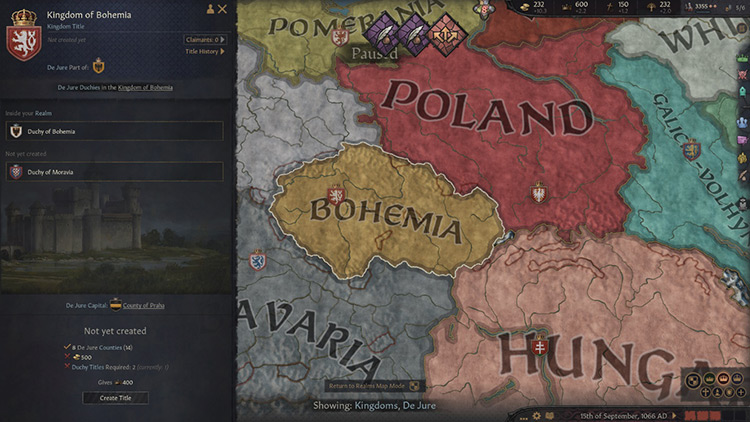
Bohemia fits the “tall” category criteria no matter who you ask.
It’s the archetypal tall playing kingdom on the map.
Because its borders differ between the two starting dates, I’ll be mainly talking about the 1066 one. In 867 it’s a single duchy kingdom, like Brittany.
It has 2 duchies with 14 counties split between them. It’s not a stretch saying you could control all of them with decent investment in stewardship, but it’s not a necessity in my opinion.
Bohemia has 53 holdings in total.
These are quite unevenly spread, meaning there are a lot of counties with 6 holdings and others with only 2 for example.
What you can do is hold the two capitals and the largest counties inside the duchies. Make sure you include the one with the goldmine! Your vassal counts’ opinion malus towards you won’t be a problem, as they will be considerably less powerful than you.
The Czech culture is perfectly suited for playing tall in their homeland.
Buffs to the hilly terrain and the “industrious” tradition combined with the “castle keepers” one gives you excellent bonuses to land development.
Playing in Bohemia, you could even conquer the nearby duchies of Nitra and Ungvar, creating a Czechoslovak kingdom. It will still be only 4 duchies and 29 counties!
And Nitra even has another goldmine you can make use of.
1. Thessalonika
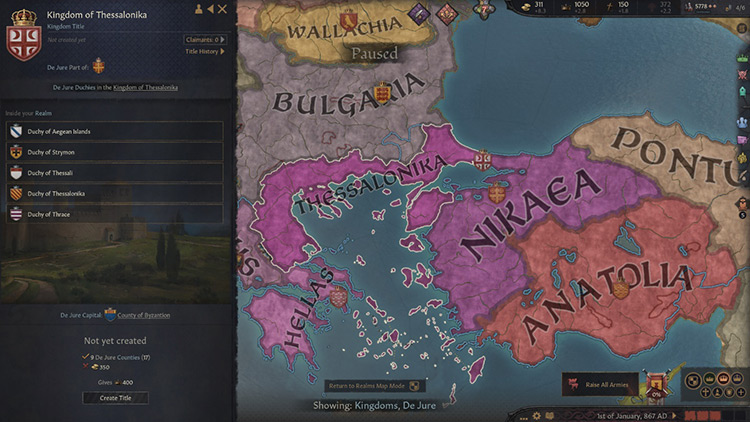
Named after my home city, I couldn’t leave the kingdom of Thessalonika outside of this list.
You could call me biased for putting the kingdom at the top – but I’d say there’s a fair argument here.
First of all, the de jure capital isn’t the city the kingdom is named after, but Constantinople. The single county of Constantinople is unique in the game.
It has a single holding with two unique buildings providing insane buffs. It also starts with the most development in the game and a boost to its growth.
Then secondly, you have a kingdom title with 5 duchies, 17 counties, and 66 holdings between them – far above the average.
The terrain is farmlands in Constantinople and Thessalonika, with plains and hills for the rest of the holdings. A unique mining settlement in Chalkidike is the cherry on top.
On top of all that, playing as any of the two traditional Greek religions (Orthodox or Hellenic), you directly control one of each religion’s holy sites – the Hagia Sophia and Mount Olympus respectively.
The native Greek culture doesn’t have any buffs geared towards playing tall. But you’re not forced to play as a Greek.
In fact, chances are you won’t be Greek if you ever try to seize the core lands of the Byzantine empire from the emperor. And if you are the emperor, well, you aren’t playing tall anymore!
And here’s something cool:
There are even two different achievements in CK3 that task you to conquer the kingdom of Thessalonika. One as a French Catholic, and another as a North Germanic Ásatrúan.
